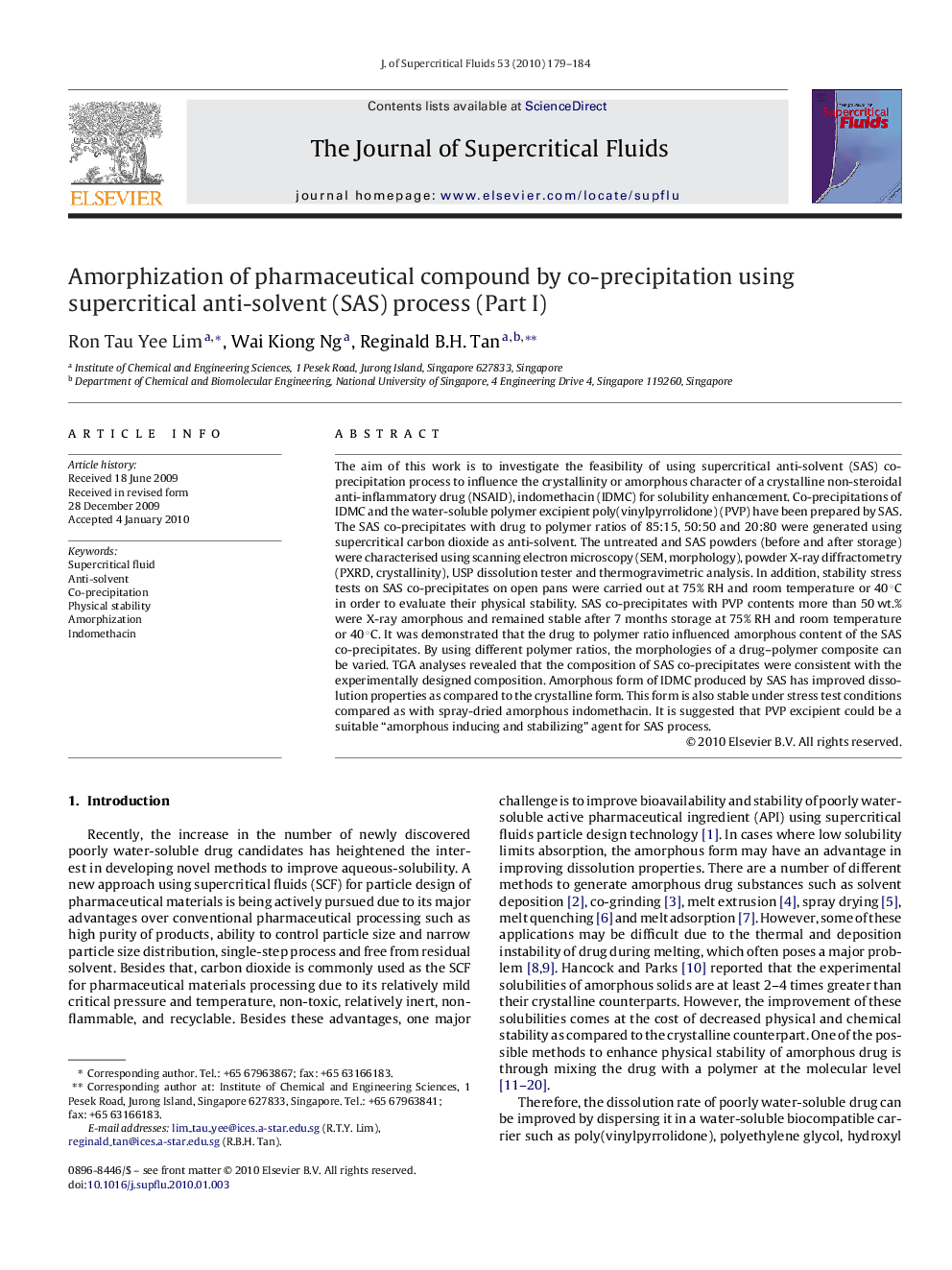| Article ID | Journal | Published Year | Pages | File Type |
|---|---|---|---|---|
| 231415 | The Journal of Supercritical Fluids | 2010 | 6 Pages |
The aim of this work is to investigate the feasibility of using supercritical anti-solvent (SAS) co-precipitation process to influence the crystallinity or amorphous character of a crystalline non-steroidal anti-inflammatory drug (NSAID), indomethacin (IDMC) for solubility enhancement. Co-precipitations of IDMC and the water-soluble polymer excipient poly(vinylpyrrolidone) (PVP) have been prepared by SAS. The SAS co-precipitates with drug to polymer ratios of 85:15, 50:50 and 20:80 were generated using supercritical carbon dioxide as anti-solvent. The untreated and SAS powders (before and after storage) were characterised using scanning electron microscopy (SEM, morphology), powder X-ray diffractometry (PXRD, crystallinity), USP dissolution tester and thermogravimetric analysis. In addition, stability stress tests on SAS co-precipitates on open pans were carried out at 75% RH and room temperature or 40 °C in order to evaluate their physical stability. SAS co-precipitates with PVP contents more than 50 wt.% were X-ray amorphous and remained stable after 7 months storage at 75% RH and room temperature or 40 °C. It was demonstrated that the drug to polymer ratio influenced amorphous content of the SAS co-precipitates. By using different polymer ratios, the morphologies of a drug–polymer composite can be varied. TGA analyses revealed that the composition of SAS co-precipitates were consistent with the experimentally designed composition. Amorphous form of IDMC produced by SAS has improved dissolution properties as compared to the crystalline form. This form is also stable under stress test conditions compared as with spray-dried amorphous indomethacin. It is suggested that PVP excipient could be a suitable “amorphous inducing and stabilizing” agent for SAS process.
Graphical abstractFigure optionsDownload full-size imageDownload as PowerPoint slide
